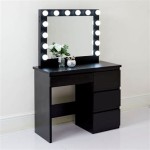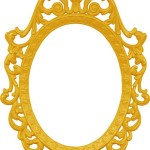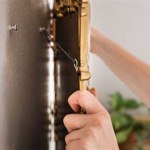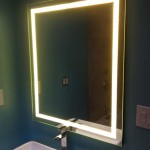Medicine Cabinet Mirror Door: A Comprehensive Overview
The medicine cabinet mirror door is a ubiquitous feature in bathrooms across residential and commercial spaces. It's a seemingly simple component, yet its design, materials, functionality, and installation involve considerations that significantly impact its overall performance and aesthetic appeal. This article provides a detailed examination of medicine cabinet mirror doors, covering aspects from their construction to the factors influencing their selection and maintenance.
Functionality and Purpose
The primary function of a medicine cabinet mirror door is multifaceted. First and foremost, it serves as a reflective surface for grooming, hygiene, and personal care activities. This reflection is crucial for tasks such as shaving, applying makeup, styling hair, and examining skin. The quality of the mirror, its size, and its positioning directly affect the user's ability to perform these tasks effectively. Secondly, the door acts as a barrier, concealing the contents of the medicine cabinet. This hidden storage offers a discreet way to organize medications, toiletries, and other personal items, contributing to a cleaner and more organized bathroom environment. The combination of reflective surface and concealed storage makes the medicine cabinet mirror door a space-saving and practical addition to any bathroom.
Beyond these primary functions, the mirror door also contributes to the overall aesthetics of the bathroom. It can enhance the perceived size of the room by reflecting light and creating an illusion of greater space. The design of the door, including its frame, style, and hardware, can complement the existing décor and architectural features of the bathroom. Furthermore, the addition of features like integrated lighting or defogging technology can elevate the functionality and luxury offered by the medicine cabinet mirror door.
Materials and Construction
The construction of a medicine cabinet mirror door involves several key materials, each contributing to its durability, aesthetic appeal, and functionality. The mirror itself is typically made of float glass, which is produced through a process that yields a flat, distortion-free surface. This glass is then coated with a reflective material, traditionally silver, although aluminum is also used as a more cost-effective alternative. The reflective coating is protected by a layer of paint or lacquer to prevent corrosion and degradation. The thickness of the glass and the quality of the reflective coating directly impact the clarity, reflectivity, and longevity of the mirror.
The frame surrounding the mirror door can be constructed from various materials, including wood, metal, and plastic. Wooden frames offer a classic and traditional aesthetic, but they require careful sealing and protection to prevent moisture damage. Metal frames, typically made of stainless steel or aluminum, provide greater durability and resistance to corrosion. Plastic frames are a more affordable option, offering water resistance and ease of maintenance. The choice of frame material depends on the desired aesthetic, budget, and environmental conditions of the bathroom. The hardware used to attach the door to the cabinet, such as hinges and handles, is also a critical component. High-quality hardware ensures smooth and reliable operation, preventing sagging, misalignment, and premature wear. Hinges are typically made of metal, such as stainless steel or brass, while handles can be made of metal, plastic, or ceramic, depending on the overall design.
Innovative construction techniques are also employed to enhance the functionality and durability of medicine cabinet mirror doors. For example, some doors feature bevelled edges, which add a decorative touch and reduce the risk of chipping or cracking. Others incorporate frameless designs, which offer a sleek and modern aesthetic. Furthermore, some manufacturers utilize tempered glass, which is significantly stronger and more resistant to breakage than standard glass. In the event of breakage, tempered glass shatters into small, blunt fragments, reducing the risk of serious injury. The selection of materials and construction techniques is critical to ensuring the safety, durability, and aesthetic appeal of the medicine cabinet mirror door.
Types and Styles
Medicine cabinet mirror doors are available in a wide variety of types and styles, catering to different design preferences, space constraints, and functional requirements. One common distinction is between surface-mounted and recessed cabinets. Surface-mounted cabinets are installed directly onto the wall, offering easy installation and accessibility. Recessed cabinets, on the other hand, are installed within the wall cavity, providing a cleaner and more integrated look. The choice between these two types depends on the available space and the desired aesthetic.
Within each type, there are numerous styles to choose from. Framed mirror doors feature a decorative frame surrounding the mirror, which can be made of wood, metal, or plastic. Frameless mirror doors offer a minimalist and contemporary aesthetic, with the mirror extending to the edges of the door. Some framed doors incorporate decorative elements such as bevelled edges, intricate moldings, or contrasting finishes. The backlighting of the mirror can be a feature as well, making the mirror glow from behind providing useful light while complimenting the design of the space.
Another important consideration is the number of doors. Single-door cabinets are suitable for smaller bathrooms or situations where space is limited. Double-door cabinets offer more storage capacity and a wider viewing angle. Triple-door cabinets, often referred to as tri-view mirrors, provide a panoramic view of the face, which is particularly useful for grooming and styling. The configuration of the doors can also vary, with some cabinets featuring hinged doors that swing open and others featuring sliding doors that move horizontally. The choice of door configuration depends on the available space and the user's preference.
In recent years, smart medicine cabinets have emerged, incorporating advanced features such as integrated lighting, defogging technology, and even built-in Bluetooth speakers. These cabinets offer enhanced functionality and convenience, but they also come with a higher price tag. The selection of a medicine cabinet mirror door should be based on a careful assessment of the user's needs, budget, and design preferences.
Installation Considerations
Proper installation is crucial to ensuring the safety, functionality, and longevity of a medicine cabinet mirror door. The installation process varies depending on whether the cabinet is surface-mounted or recessed. Surface-mounted cabinets are typically easier to install, requiring only a few screws or anchors to secure them to the wall. However, it is important to ensure that the wall is structurally sound and capable of supporting the weight of the cabinet. Stud finders can be used to locate the wall studs, providing a secure anchoring point for the mounting screws.
Recessed cabinets require more extensive preparation, as they involve cutting an opening in the wall cavity. The dimensions of the opening must be precisely measured to ensure a snug fit for the cabinet. It is also important to check for any obstructions within the wall cavity, such as plumbing pipes or electrical wires. If necessary, these obstructions may need to be relocated before the cabinet can be installed. Once the opening is prepared, the cabinet is inserted into the wall cavity and secured with screws or anchors. It is important to ensure that the cabinet is level and plumb before tightening the screws.
Regardless of the installation method, it is essential to follow the manufacturer's instructions carefully. Incorrect installation can lead to a variety of problems, including sagging doors, misaligned hinges, and water damage. If you are not comfortable performing the installation yourself, it is advisable to hire a qualified professional. A professional installer will have the necessary tools and expertise to ensure that the cabinet is installed correctly and safely.
In addition to the physical installation, it is also important to consider the placement of the medicine cabinet. The cabinet should be positioned at a comfortable height for the user, typically between 40 and 48 inches from the floor to the center of the mirror. The cabinet should also be located in a well-lit area, preferably near a light fixture. Adequate lighting is essential for grooming and hygiene tasks. Finally, the cabinet should be positioned away from sources of excessive moisture, such as showerheads or bathtubs. Prolonged exposure to moisture can damage the cabinet and its contents.
Maintenance and Care
Proper maintenance and care are essential for preserving the appearance and longevity of a medicine cabinet mirror door. Regular cleaning is crucial to prevent the buildup of dirt, dust, and grime. The mirror surface should be cleaned with a soft cloth and a mild glass cleaner. Avoid using abrasive cleaners or scouring pads, as these can scratch or damage the mirror. The frame should be cleaned with a damp cloth and a mild soap solution. Avoid using harsh chemicals or solvents, as these can damage the finish.
The hinges and other hardware should be lubricated periodically to ensure smooth and reliable operation. A small amount of silicone lubricant can be applied to the hinges to prevent squeaking and sticking. The screws that hold the hinges in place should be checked regularly and tightened if necessary. Loose screws can cause the door to sag or become misaligned. The interior of the cabinet should be cleaned periodically to remove any spills or stains. A damp cloth and a mild soap solution can be used to clean the shelves and the interior surfaces. Avoid using abrasive cleaners or scouring pads, as these can scratch or damage the finish.
In humid environments, it is important to take steps to prevent moisture damage. The bathroom should be well-ventilated to reduce humidity levels. A dehumidifier can also be used to help control humidity. The cabinet should be sealed properly to prevent moisture from penetrating the frame and the mirror. If the cabinet is made of wood, it should be treated with a sealant or varnish to protect it from moisture damage. Any signs of water damage, such as warping, cracking, or peeling, should be addressed promptly to prevent further deterioration.
By following these simple maintenance and care tips, it is possible to keep a medicine cabinet mirror door looking its best for many years.

Led Medicine Cabinet Wall Mounted Bathroom 3 Mirrored Door High Gloss Black

Wall Mounted Bathroom Cabinet Mirror Door Organiser Storage Living Room White

Homfa Bathroom Wall Cabinet Medicine With Mirror Doors Wood Hanging 3 Storage Shelf Oak Finish Com

Choosing The Perfect Medicine Cabinet With Mirrors For Your Bathroom Ledmyplace

Costway 36 Wide Wall Mount Mirrored Bathroom Medicine Cabinet Organizer Mirror Door Com

Getpro Led Lighted Medicine Cabinet With Mirror For Bathroom 30x30 Dou Getprohome

Kleankin Wall Mounted Medicine Cabinet 39 25 W X 27 5 H Bathroom Mirror With Single Mirrored Door Shelves And Storage Cupboard White Aosom

Concord Medicine Cabinet 48 Inch Bathroom Wall With Mirrored Doors Semi Gloss White Finish Com

Kohler Medicine Cabinet With Mirrored Doors 30 In Aluminum Cb Clc3026fs Rona

Kleankin Bathroom Storage Cabinet Wall Mounted Medicine With Double Mirror Doors Adjustable Shelf White Aosom








